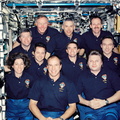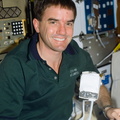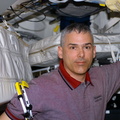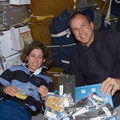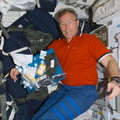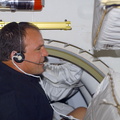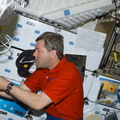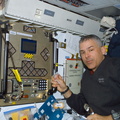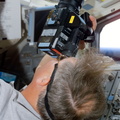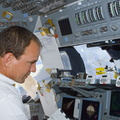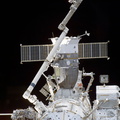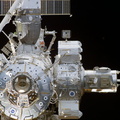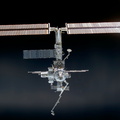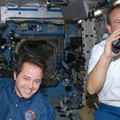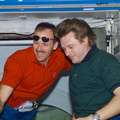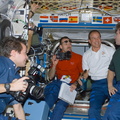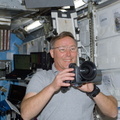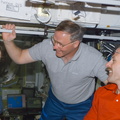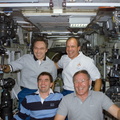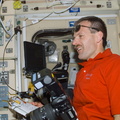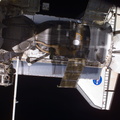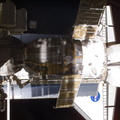
WIKIARCHIVES.SPACE
The Human Spaceflight Archive

Information
- Taken in
- Space
- Author
- NASA
- Description
- STS-110 Mission astronaut Rex J. Walheim, accompanied by astronaut Steven L. Smith (out of frame) translates along the Destiny laboratory on the International Space Station (ISS) during the third scheduled EVA session. The duo released the locking bolts on the Mobile Transporter and rewired the Station's robotic arm. The STS-110 mission prepared the ISS for future space walks by installing and outfitting the S0 (S-Zero) Truss and the Mobile Transporter. The 43-foot-long S0 truss weighing in at 27,000 pounds was the first of 9 segments that will make up the Station's external framework that will eventually stretch 356 feet (109 meters), or approximately the length of a football field. This central truss segment also includes a flatcar called the Mobile Transporter and rails that will become the first "space railroad," which will allow the Station's robotic arm to travel up and down the finished truss for future assembly and maintenance. The completed truss structure will hold solar arrays and radiators to provide power and cooling for additional international research laboratories from Japan and Europe that will be attached to the Station. Milestones of the S-110 mission included the first time the ISS robotic arm was used to maneuver space walkers around the Station and marked the first time all space walks were based out of the Station's Quest Airlock. It was also the first Shuttle to use three Block II Main Engines. The Space Shuttle Orbiter Atlantis, STS-110 mission, was launched April 8, 2002 and returned to Earth April 19, 2002.
- Created on
- Sunday 14 April 2002
- Albums
- US SPACE PROGRAM / SPACE SHUTTLE / MISSIONS / STS-110 / Mission Photos (Edited)
- Source link
- https://images.nasa.gov/search?q=sts-110&page=1&media=image,video,audio&yearStart=1920&yearEnd=2024
- Visits
- 19
- Rating score
- no rate
- Rate this photo
- License
- Public Domain
- Modified by WikiArchives
- No (original)
- Downloads
- 1
Powered by Piwigo

